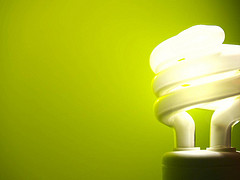In Simulating Solar Power Plant Variability:

A Review of Current MethodsPDF, Sandia National Laboratories reviews methods for producing simulated high-resolution solar photovoltaic (PV) power plant output profiles for variability studies. With this work, Sandia aims to inform integration studies on the ease of implementation and accuracy of these simulation methods, because precise si
National Labs Tackle Three Topics in Recent Reports

The Energy Department’s national laboratories have recently released three solar-focused technical reports.
· In Simulating Solar Power Plant Variability: A Review of Current MethodsPDF, Sandia National Laboratories reviews methods for producing simulated high-resolution solar photovoltaic (PV) power plant output profiles for variability studies. With this work, Sandia aims to inform integration studies on the ease of implementation and accuracy of these simulation methods, because precise simulation of PV plant variability is critical for grid integration studies.
· In Land-Use Requirements for Solar Power Plants in the United StatesPDF, the National Renewable Energy Laboratory (NREL) provides data and analysis of the land use associated with U.S. utility-scale, ground-mounted PV and concentrating solar power (CSP) facilities. One concern regarding large-scale solar deployment is its potentially significant land use, and prior to this report, a comprehensive evaluation of solar land use requirements did not exist in the research literature.
· In Proposal for a Guide for Quality Management Systems for PV Manufacturing: Supplemental Requirements to ISO 9001-2008PDF, NREL proposes a new tool to improve confidence in the warranty of PV modules. Released on behalf of the International PV Module Quality Assurance Task Force, the report provides a guideline for PV manufacturers to produce modules that replicate proven designs at an industrial scale without compromising consistency with quality and reliability requirements.
10 Fun Facts about the Renewable Energy Industry

I came across the great blog post the other day and wanted to share it with you. It was the 10 Renewable Energy Statistics you Might not Know and it hit the nail on the head. You can also check out the original post for more information and great links. Here is a quick overview:
1. It is estimated that renewable energy will rise at the rate of 25% of global gross power generation in 2018. 2011 global growth was at 20% and in 2006 it was 19%. This is good news.
2. Hydropower is the leader in global renewable generation and accounted for 16% in 2011.
3. Wind and solar power are the newest forms of renewable energy generation, but they are quickly moving forward with their production doubling to 8% of global renewable generation in 2018 from 4% in 2011.
4. Of all the places in the world, Germany is the leader in solar energy production as they have installed more solar then the rest of the world combined.
5. Iceland uses predominately hydropower, to the tune of 75%, and the rest comes from geothermal, solar and wind.
6. Global renewable generation exceeded the electric consumption of China in 2012.
7. China is the leader in hydropower production accounting for 40% of the growth in global power capacity through to 2018.
8. Wind power is the next leading form of renewable energy being deployed in 75 countries in 2018. China again is the leader in this form of renewable energy with US, Germany, Spain and India in the top 5 countries.
9. Six of the top 10 countries for wind power generation come from Europe and include Germany, Spain, UK, Italy, France and Portugal.
10. Even though renewable is on the rise in the US to the tune of 150% by 2040, it will only make up 16% of global generation mix by that point.
What other fun facts can you think of about the renewable energy industry? Let us know below.
Improving Your Home and Saving Energy: A UK Perspective

When examining energy policy on a broad basis, it’s clear that European governments are committed to making significant reductions in the levels of greenhouse gas emissions. By the year 2020, all EU governments are aiming to reduce emissions to some 20% below levels that were seen in 1990.
Within that wider objective, however, there’s scope for a number of different approaches to be taken. The UK strategy has involved examining a range of areas, including nationwide energy generation, transport, home energy use, commercial energy requirements and commitments to reduce energy usage levels. Residential property improvements For members of the public, there is often the question of how to go about making improvements within the home.
Given the aims of policy-makers, there is often an expectation that there will be a considerable amount of assistance available, both in terms of advice and financial incentives. Unfortunately, residential energy users are often left frustrated, when they discover that such advice is not readily available. In part, this undoubtedly stems from the changing focus of consecutive governments. As environmental and energy issues are often given different priorities, depending upon the political party that dominates a government at any point in time, it’s natural that policies might change. The end result, as seen in the UK, is a set of regulations and incentives that can appear to be incredibly confusing.
The Green Deal, for instance, was introduced to encourage home owners to make changes that would have clear environmental benefits. Relatively cheap loans would be offered in order to finance structural alterations and bring about improvements in the UK’s housing stock. It appears, however, that many have simply been confused by what has been proposed. As a result, take-up of the scheme has been disappointing and there are real doubts about whether it can make a meaningful contribution to meeting future emissions targets. So how can you go about making changes that will save on energy and also be cost-effective for your family There are a number of alterations that can be made to your property, which will have clear benefits.
Insulating your home
Although it may be tempting to think on a grand scale, the truth is that seemingly minor modifications can often have a dramatic impact on the home. Improving insulation may not seem to be particularly exciting, but it’s one of the most cost-effective approaches available in many cases. You’re already paying to heat your home, so it seems like a real shame to think of that heat escaping via windows, walls, doors and roofs.
It’s a situation that is easy to remedy and there’s even scope to make improvements yourself in some areas. Ensuring that the amount of insulation within your loft meets current Building Regulations is something that’s easy to achieve and relatively inexpensive. Unless your home was built within the last 10 years, or has previously been updated, there’s a strong chance that it won’t meet the existing regulations, simply because they are updated at regular intervals. By adding the extra insulation that’s required, you’ll be able to start feeling the benefits immediately.
Cavity wall insulation will require assistance from experts, but can also be expected to have a relatively short payback period. The impact will depend on the type of property that you have, with effectiveness being greatest in the case of large, detached properties.As well as national schemes, there are often incentives offered on a local level within the UK. Approach your local council and see whether they are prepared to contribute to the cost of improving insulation within your home.
Changing windows and doors
You may also be tempted by the idea of investing in double glazed windows, which can reduce heat loss and will also provide better noise insulation. These represent a popular choice for those living close by busy roads. The biggest problem with installing double glazing is that the initial cost can be relatively high. Although you might expect to get that money back over time, the value of the investment will need to be judged on the basis of how long you are intending to stay at the property and whether such an improvement might also add value to your home, in the eyes of future buyers.
Examining energy generation
One of the key advantages associated with improving insulation within your home is that it means that you can ensure that you aren’t wasting so much energy and money. Why would you wish to pay to use more electricity, gas or oil than you really need to? This is an issue that can also be tackled by thinking carefully about how you heat, light and power your home.
The reality is that there are numerous ways of achieving this aim and that you have a multitude of options available to you. There’s a real chance for you to reduce your reliance on the national electricity supply, for instance. Unfortunately, getting information on what is suitable for your home is not always as straightforward a task as it should be. It’s mainly been left to regional suppliers of renewables to provide bespoke advice to home owners.
The commercial nature of such businesses rightly leaves consumers with doubts about the advice that they are being given. In particular, you may be left wondering whether you really will be able to generate the desired levels of energy, in order to make a system cost-effective. This is certainly a concern that has, until recently, seemed to limit the rollout of solar PV systems within the UK.
There was initial scepticism about the chances of receiving enough sunlight, in order to produce the electricity levels that had been predicted. As more and more properties have been fitted with solar systems, it’s clear that such reservations are reducing.
Heat pumps
The increasing number of heat pump installations that are being carried would appear to suggest individuals are prepared to look beyond the systems that have become increasingly main-stream. In effect, if a solution can help to reduce your heating costs, then it’s certainly worth investigating further.
It may also be tempting to think about making use of renewables within a domestic setting as part of a move towards lifestyle change. There’s absolutely no doubt that being good to the environment has often been associated with an alternative form of living, but it does seem that thoughts here are changing.
Modern solutions with a traditional feel
Many families are coming to realise that there’s a beauty associated with having a real feeling for our surroundings. Although some energy systems make use of cutting edge technology, they may also hint at a return to a way of life that seems so much simpler. A classic example of this is the use of biomass heating which can provide a real focal point within the home.
For those who don’t like the idea of imagining the constant need to add more wood pellets to the fire, in order to provide warmth within the home, it can come as a relief to discover that modern, automated boilers reduce the amount of feeding that’s required. This is a good example of how new technologies are driving a switch to something that, on the face of it, appears to be quite traditional.
Using less energy
In this post, I’ve focused on improvements that can ensure that heat is maintained within the home and that power is generated using sustainable means. There is a third element that simply cannot be ignored: making sure that you don’t thoughtlessly waste energy. There may not be much glory associated with turning off the lights when you leave a room, or ensuring that you don’t over-fill a kettle, but these small changes can make a massive difference. If you can encourage all members of your household to take such simple steps, then you’ll find that you’ll be able to save a surprising amount of energy.
Green Home Calculator Reveals: "Is My Home Greener Than My Neighbors'?"
Build It Green is excited to announce today’s release of our new Green Home Calculator at
www.GreenPointRated. com/Calculator. This advanced online tools helps you answer key questions:
- How does your home’s energy and water efficiency compare to similar homes?
- Are your utility bills lower or higher than your neighbors?
- What are a few simple home improvements that could save you money?
- How can you reduce your home’s impact on climate change?
The calculator walks users through a series of questions and scores their home, then offers tailored suggestions for how to improve scores.
Try out this cool tool or show it to your clients! The calculator can help them get a sense of their green home options for long-term savings; they can even see in real time how their score changes based on implementing various improvements.
Build It Green developed this tool in collaboration with Alameda County’s StopWaste and UC Berkeley’s Renewable and Appropriate Energy Laboratory, through funding from the California Air Resources Board.






